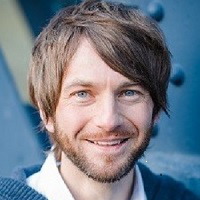
”It was a spring without voices. On the mornings that had once throbbed with the dawn chorus of robins, catbirds, doves, jays, wrens, and scores of other bird voices there was now no sound; only silence lay over the fields and woods and marsh.” ˜ Rachel Carson
This is an excerpt from the first chapter of Carson’s hauntingly prophetic text Silent Spring. Carson was writing about a fictional scenario in a made-up American town. But she believed that this would be the reality if we did not change our relationship to the natural world.
It’s more than 50 years since Silent Spring jarred the American consciousness and ignited the environmental revolution. In the time since, numerous environmental laws have been enacted (some directly as a result of Silent Spring) and we’ve gained far greater visibility of the impact of a burgeoning human population on nature.
Yet the natural world has continued to suffer shocking losses. Why? It seems to make no sense.
How can we explain the situation of seeing more clearly what’s happening to nature and yet seemingly continue to sit on the sidelines?
”The animal body, for all its susceptibility and vertigo, remains the primary instrument of our knowing, as the capricious earth remains our primary cosmos.” ˜ David Abram
We modern humans spend a lot of time in our heads. We love to think, plan, scheme, reflect and to use our vast range of words to describe this human experience.
Sometimes we forget that fundamentally our relationship with the world around us is a physical one, an embodied one. And we seem to have forgotten about the alchemy and potency of having a physical encounter with nature.
The French phenomenologist Maurice Merleau-Ponty argued that it is the body, and not the mind, that is the primary experiencing subject; although it often seems that we have experiences in our heads (because we think about them, process them and reflect upon them afterwards), it is actually the body which has the raw, pre-reflective encounter with the world outside itself.
But why is this useful?
Merleau-Ponty famously said that the world is made of the very stuff of the body. He was an academic and not particularly interested in the ecological significance of his assertions.
But visionary nature philosopher David Abram has picked up on Merleau-Ponty’s ideas and sees huge scope for applying them to our relationship with nature.
Abram points out that we modern humans seem dissatisfied with the world as we experience it. Instead we go in search of a more fundamental reality in, what Abram calls, the arcane dimensions of a spiritual realm or greater scientific understanding.
Abram does not deny the importance of these forays but he points out that in doing so we often neglect what is immediately in front of us—the embodied multi-sensory encounter with the world we are immersed in.
He argues that this is significant because it is the physical encounter with nature that can lead to empathy towards it. For example, it’s easy to imagine that had we cared for an animal, given it our love and attention, felt it against our skin, were familiar with its pleas for attention, its scent, and so on, that we would be more inclined to care about that species generally.
It is difficult to care about something that we only have a theoretical knowledge of. If we were a thinking mind only, with no bodily form, would we have the capacity to truly care about anything?
Is it not the embodied, multi-sensory experience of things that leads to empathy towards them? And remember that emotions are experienced in the body and not in our minds.
”No witchcraft, no enemy action had silenced the rebirth of new life in this stricken world. The people had done it to themselves.” ˜ Rachel Carson
Carson cites humanity’s erroneous belief that we must dominate and master nature as the root of our changing relationship with it. But it could equally be argued that as our embodied encounters with nature have been diluted (for many reasons, but let’s take mass urbanization as one example) our relationship to nature has taken a vastly different direction.
Sadly great losses have already occurred in the natural world; how do we avoid the stricken world that Carson warns against?
Abram writes:
”I do not deny the importance of those other scales or dimensions, nor the value of the various truths that me be found there. I deny only that this shadowed, earthly world of deer tracks and moss is somehow less worthy, less real, than those abstract dimensions. It is more palpable to my skin, more substantial to my flaring nostrils, more precious—infinitely more precious to the heart drumming within my chest.”
Let’s feel our way back to the animate Earth and remember that the world is made of the very stuff of the body.
~
Author: Gary Thomson
Image: Roksolana Zasiadko
Editors: Travis May; Lindsey Block






Read 1 comment and reply